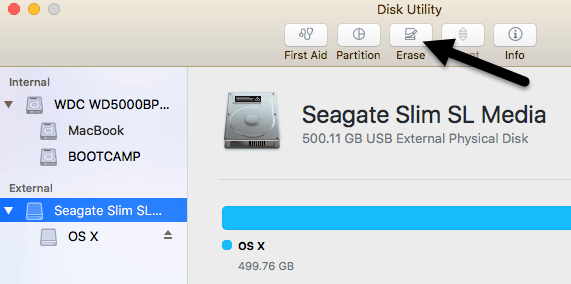

- Mac os x vmware usb drive install#
- Mac os x vmware usb drive archive#
- Mac os x vmware usb drive software#
- Mac os x vmware usb drive password#
- Mac os x vmware usb drive iso#
Mac os x vmware usb drive iso#
The ISO image contains a CD, DVD, or Blu-ray disc-the file system itself. The name ISO is taken from the name of the file system used for optical media. They are generally used for backing up CDs or for distributing large collections of files that you want to burn to CDs.

Mac os x vmware usb drive archive#
What is an ISO Image?Īn ISO image (also called an ISO file) is an archive file that contains the same copy (or image) of the data found on a disc (such as a CD or DVD). But first, let’s know what is an ISO image and then I’ll provide you links so you can download the ISO image of macOS Monterey for VMware and VirtualBox from there. So I bet you want to try all these new features, that’s why you are here. Since macOS Monterey is the latest achievement of Apple to empower apple products for computer users, it holds a bunch of new features.
Mac os x vmware usb drive software#
The Siri voice assistant has an interesting update, and it is now available for third-party applications and software as well. All these operating systems provide more functions for users in various fields such as music playback, routing, maps, notes, videos, and privacy. Which I provide you here in this article.Īt Apple Park in Cupertino, Apple introduced new versions for the iOS 15, iPadOS 15, WatchOS 8, and macOS Monterey operating systems.
Mac os x vmware usb drive install#
Follow the instructions when the macOS installer opens.If you want to install macOS Monterey on a Virtual machine (VMware & VirtualBox) on your PC and laptop, you need to download macOS Monterey ISO Image. Select the volume containing the bootable installer, then select ‘Continue’. Hold the power button until you see the startup options window. Make sure this machine is connected to the internet and supports the macOS version you’re installing. Click ‘Continue’ and follow the instructions.įirst, plug the bootable installer into the Mac you wish to install macOS. Select ‘Install macOS’ or ‘Install OS X’ from the Utilities window. Select the volume that contains the bootable installer. Release the ‘Option’ key when you see a dark screen showing your bootable volumes. Press and hold the ‘Option’ key after turning on or restarting the Mac. Plug the bootable installer into a Mac that’s connected to the internet and is compatible with the macOS version you’re installing. The steps are different, depending on whether you're using an Intel-based Mac or one with Apple silicon. It's now time to use the bootable installer to install a fresh copy of macOS. You've now successfully created a bootable installer that you can use to install macOS on other machines. If asked, click 'OK' to allow the copying of files to proceed. Type 'Y' to confirm that you want to erase the volume, then press 'Return'.

Mac os x vmware usb drive password#
Type your administrator password when prompted, then press 'Return' again. Continue with TerminalĪfter pasting the command above, hit the 'Return' key. Change the name in the command to match your settings, if necessary.įor macOS Big Sur, copy and paste the following into Terminal: sudo /Applications/Install\ macOS\ Big\ Sur.app/Contents/Resources/createinstallmedia -volume /Volumes/MyVolumeįor macOS Catalina: sudo /Applications/Install\ macOS\ Catalina.app/Contents/Resources/createinstallmedia -volume /Volumes/MyVolumeįor macOS Mojave: sudo /Applications/Install\ macOS\ Mojave.app/Contents/Resources/createinstallmedia -volume /Volumes/MyVolumeįor macOS High Sierra: sudo /Applications/Install\ macOS\ High\ Sierra.app/Contents/Resources/createinstallmedia -volume /Volumes/MyVolumeįor OS X El Capitan: sudo /Applications/Install\ OS\ X\ El\ Capitan.app/Contents/Resources/createinstallmedia -volume /Volumes/MyVolume -applicationpath /Applications/Install\ OS\ X\ El\ Capitan.app 3. With each command, it's assumed the installer is located in your 'Applications' folder and 'MyVolume' is the name of the USB flash drive. The command differs, depending on the macOS version you're going to install. In the next step, you'll enter a command in Terminal. Choose 'Finder' then select 'Go' from the menu bar. Connect the USB flash drive to the computer you wish to install macOS. Once you have your bootable installer ready, it's time to move to the next step.


 0 kommentar(er)
0 kommentar(er)
